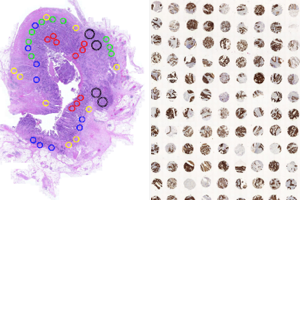Next-generation Tissue Microarrays

We construct tissue microarrays based on digitally annotated scans. This allows researchers to capture the most important regions within their tissues for their downstream analysis. We call our approach next-generation Tissue Microarrays (ngTMA®). Since 2012, our lab has constructed almost 1000 ngTMA blocks for studies related to precision medicine, tumor heterogeneity, rare diseases, animal models and establishment of new tissue visualization techniques (e.g. CODEX and OPAL). We have collected images from more than 1 million tissue spots, corresponding to several thousand patients with annotated clinicopathological data, which can now be explored using artificial intelligence.